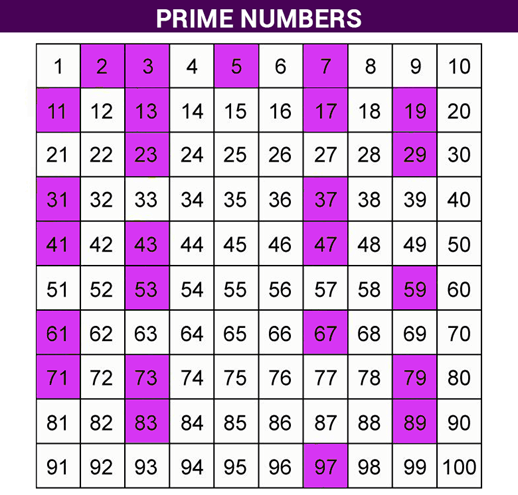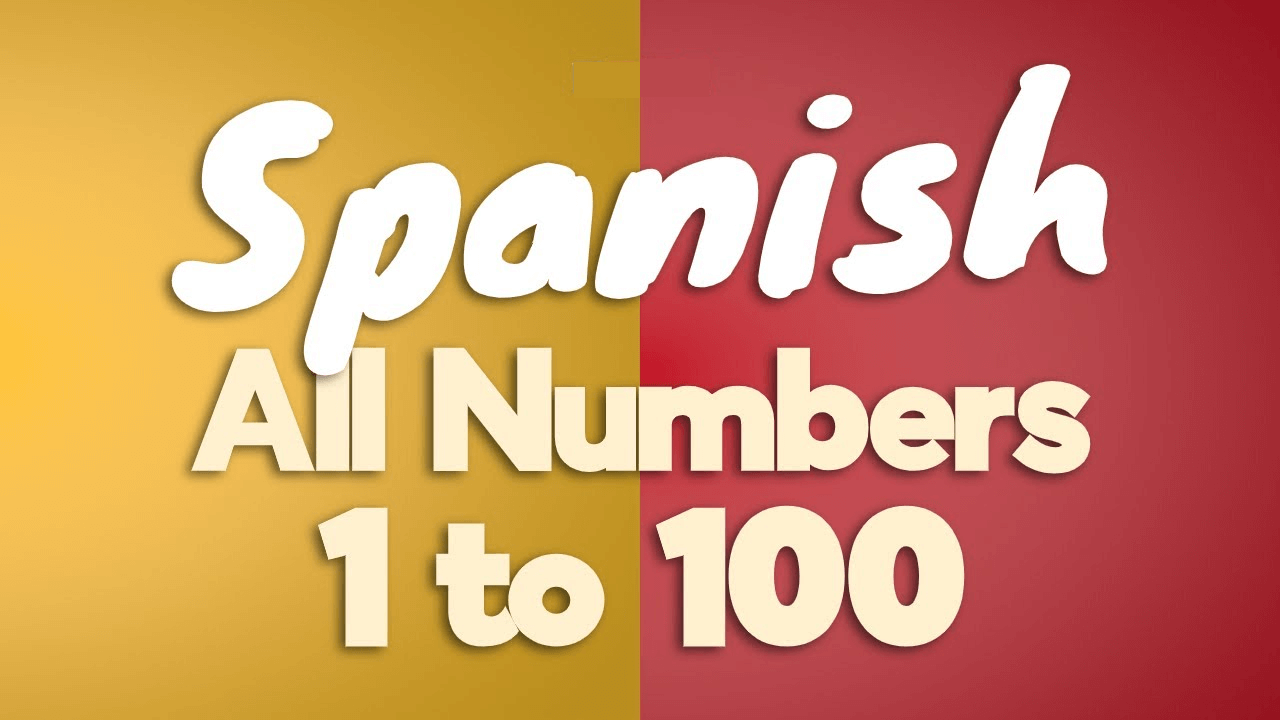Learning a new language is always exciting, and Hindi is no exception. One of the first things you need to know when learning Hindi is how to count Hindi numbers from 1 to 100.
Are you looking for Hindi Numbers from 1 to 100?
In this article, we will provide you with a complete guide to Hindi numbers 1 to 100, including their spelling, pronunciation, and usage.
The Hindi Number System
Hindi is one of the official languages of India and has its own unique numerical system. Hindi, like many other Indian languages, uses a decimal numerical system. The numbers from 0 to 9 have their unique symbols and names, and the numbers from 10 to 100 are formed by combining the words for tens and ones. For example, 20 in Hindi is called “bees,” which is a combination of “do” (two) and “ek” (one).
The Hindi number system consists of the following ten digits:
| Number | Hindi |
|---|---|
| 0 | शून्य (shoon-ya) |
| 1 | एक (ek) |
| 2 | दो (do) |
| 3 | तीन (teen) |
| 4 | चार (chaar) |
| 5 | पांच (paanch) |
| 6 | छह (chhah) |
| 7 | सात (saat) |
| 8 | आठ (aath) |
| 9 | नौ (nau) |
To form higher numbers in Hindi, you simply concatenate the digits. For example, 32 is तीन दो (teen do) and 58 is पांच आठ (paanch aath).
Hindi Numbers from 1 – 100
In the beginning, the Hindi numbers can be a little bit tough, but if you follow the numbering pattern, then you can easily remember them. The below are the Hindi Numbers from 1 to 100:
| English Number | Hindi Number | Hindi Numbers in Words |
|---|---|---|
| 0 | ० | शून्य (Shunya) |
| 1 | १ | एक (Ek) |
| 2 | २ | दो (Do) |
| 3 | ३ | तीन (Teen) |
| 4 | ४ | चार ( Chaar) |
| 5 | ५ | पाञ्च ( Panch) |
| 6 | ६ | छे (Chah) |
| 7 | ७ | सात ( Saat) |
| 8 | ८ | आठ (Aath) |
| 9 | ९ | नौ ( Nau) |
| 10 | १॰ | दस ( Das) |
| 11 | ११ | ग्यारह ( Gyarah) |
| 12 | १२ | बारह ( Barah) |
| 13 | १३ | तेरह ( Terah) |
| 14 | १४ | चौदह ( Chaudah) |
| 15 | १५ | पन्द्रह ( Pandrah) |
| 16 | १६ | सोलह ( Solah) |
| 17 | १७ | सत्रह ( Sattrah) |
| 18 | १८ | अठारह ( Aatharah) |
| 19 | १९ | उन्नीस ( Unnis) |
| 20 | २॰ | बीस ( Bees) |
| 21 | २१ | इक्कीस ( Ikkees) |
| 22 | २२ | बाईस ( Baees) |
| 23 | २३ | तेईस ( Teis) |
| 24 | २४ | चौबीस ( Chaubees) |
| 25 | २५ | पच्चीस ( Pachchees) |
| 26 | २६ | छब्बीस ( Chhabbees) |
| 27 | २७ | सत्तइस ( Sattaees) |
| 28 | २८ | अठ्ठाइस ( Aththaees) |
| 29 | २९ | उन्तीस ( Unantees) |
| 30 | ३॰ | तीस ( Tees) |
| 31 | ३१ | इकतीस ( Ekatees) |
| 32 | ३२ | बत्तीस ) Battees) |
| 33 | ३३ | तेतीस ( Tetees) |
| 34 | ३४ | चौतीस ( Chutees) |
| 35 | ३५ | पैंतीस ( Paitees) |
| 36 | ३६ | छत्तीस (Chhatees) |
| 37 | ३७ | सैंतीस ( Santees) |
| 38 | ३८ | अड़तीस ( Adtees) |
| 39 | ३९ | उन्तालीस ( Untalees) |
| 40 | ४॰ | चालीस ( Chalees) |
| 41 | ४१ | इकतालीस ( istalees) |
| 42 | ४२ | ब्यालीस ( Bayalees) |
| 43 | ४३ | तेतालीस ( Tetalees) |
| 44 | ४४ | चौवालीस ( Chauvalees) |
| 45 | ४५ | पैंतालीस (Paitalees) |
| 46 | ४६ | छियालीस ( Chhiyalees) |
| 47 | ४७ | सैतालीस ( Saitalees) |
| 48 | ४८ | अड़तालीस ( Adtalees) |
| 49 | ४९ | उनंचास ( unchaas) |
| 50 | ५॰ | पचास ( Pachas) |
| 51 | ५१ | इक्यावन ( Ikyawan) |
| 52 | ५२ | बावन ( Bawan) |
| 53 | ५३ | तिरेपन ( Tirepan) |
| 54 | ५४ | चौअन ( Chauwan) |
| 55 | ५५ | पचपन ( Pachapan) |
| 56 | ५६ | छप्पन ( Chhappan) |
| 57 | ५७ | सत्तावन ( Sattavan) |
| 58 | ५८ | अठ्ठावन ( Aththavan) |
| 59 | ५९ | उनसठ ( Unsath) |
| 60 | ६॰ | साठ ( Saath) |
| 61 | ६१ | इकसठ ( Eksath) |
| 62 | ६२ | बासठ ( Basath) |
| 63 | ६३ | तिरसठ ( Tirsath) |
| 64 | ६४ | चौंसठ ( Chausath) |
| 65 | ६५ | पैंसठ ( Paisanth) |
| 66 | ६६ | छियासठ ( Chhiyasath) |
| 67 | ६७ | सरसठ ( Sarsath) |
| 68 | ६८ | अरसठ ( Arasath) |
| 69 | ६९ | उनहत्तर ( Unahttar) |
| 70 | ७॰ | सत्तर ( Sattar) |
| 71 | ७१ | इकहत्तर ( Ekahttar) |
| 72 | ७२ | बहत्तर ( Bahattar) |
| 73 | ७३ | तिहत्तर ( Tihattar) |
| 74 | ७४ | चौहत्तर ( Chauhattar) |
| 75 | ७५ | पिचत्तर ( Pichhattar) |
| 76 | ७६ | छिहत्तर ( Chhihttar) |
| 77 | ७७ | सतत्तर ( Satattar) |
| 78 | ७८ | अठत्तर (Athattar) |
| 79 | ७९ | उनासी ( Unasee) |
| 80 | ८॰ | अस्सी (Assee) |
| 81 | ८१ | इक्यासी ( Ikyasee) |
| 82 | ८२ | ब्यासी ( Byasee) |
| 83 | ८३ | तिरासी (Tirasee) |
| 84 | ८४ | चौरासी ( Chaurasee) |
| 85 | ८५ | पिचासी ( Pichasee) |
| 86 | ८६ | छियासी (Chhiyasee) |
| 87 | ८७ | सतासी ( Satasee) |
| 88 | ८८ | अठासी ( Athasee) |
| 89 | ८९ | नवासी ( Navasee) |
| 90 | ९॰ | नब्बे ( Nabbe) |
| 91 | ९१ | इक्यानवे ( Ikyanve) |
| 92 | ९२ | बानवे ( Banve) |
| 93 | ९३ | तिरानवे ( Tiranve) |
| 94 | ९४ | चौरानवे ( Chauranave) |
| 95 | ९५ | पिञ्चानवे ( Pichchanve) |
| 96 | ९६ | छियानवे ( Chhiyanve) |
| 97 | ९७ | सत्तानवे ( Sattanve) |
| 98 | ९८ | अठ्ठानवे ( Aththanve) |
| 99 | ९९ | निन्यानवे ( Ninyanve) |
| 100 | १॰॰ | सौ ( Sau) |
Hindi Counting Higher Numbers:
| Number | Hindi |
|---|---|
| 1,000 | एक हज़ार (Ik Hazaar) |
| 10,000 | दस हज़ार (Das Hazaar) |
| 100,000 | एक लाख (Ik Lakh) |
| 1,000,000 | दस लाख (Das Lakh) |
| 10,000,000 | एक करोड़ (Ik Caror) |
| 100,000,000 | दस करोड़ (Das Caror) |
| 1,000,000,000 | एक अरब (Ek Arab) |
| 100,000,000,000 | एक खरब (Ek Kharab) |
These Hindi numbers are commonly used in everyday life in India for counting, telling time, and giving directions.
For example, if someone wants to say “I have three pens,” they would say “Mere paas teen kalam hai” (मेरे पास तीन कलम है). If someone asks for the time and it is 5:30, they would say “Paanch baje tees minute” (पांच बजे तीस मिनट). And if someone is giving directions and says “Turn left after 200 meters,” they would say “Do sau meter baad baayein mudh jaiye” (दो सौ मीटर बाद बाएँ मुड़ जाइए).
Why is it important to learn Hindi numbers?
Learning Hindi numbers is an essential step towards becoming fluent in the language. Numbers are used every day in our lives, and they are critical when communicating with others. Being able to count in Hindi will allow you to understand prices, ask for quantities, and even tell the time. Moreover, it will help you when traveling, shopping, or ordering food in India.
Tips for learning Hindi numbers
Learning a new language can be challenging, but it can also be fun and rewarding. Here are some tips to help you master Hindi numbers:
- Practice regularly: The more you practice, the better you’ll become. Set aside some time each day to practice counting in Hindi.
- Use flashcards: Write the Hindi numbers on one side of a flashcard and the corresponding English numbers on the other. Test yourself by trying to recall the Hindi numbers.
- Listen to Hindi speakers: Listen to Hindi speakers count and try to repeat the numbers after them. This will help you learn the correct pronunciation and intonation.
- Use Hindi numbers in everyday life: Practice using Hindi numbers in everyday situations, such as when telling time, counting money, or ordering food.
- Learn the number patterns: Notice the patterns in the Hindi number system. For example, the numbers from 31 to 38 all end in “tees”.
FAQs
What are the most important Hindi numbers to learn?
The most important Hindi numbers to learn are probably the numbers from 1 to 10, as these are used in many everyday situations.
Are Hindi numbers difficult to learn?
Learning any new language can be challenging, but with practice and patience, anyone can learn Hindi numbers.
Are Hindi numbers used differently in different regions of India?
While Hindi is spoken in many regions of India, the number system remains consistent throughout the country.
Can I use Hindi numbers in other contexts besides counting?
Yes, Hindi numbers are used in many contexts, such as telling time, giving addresses, and counting money.
Conclusion
Learning how to count in Hindi from 1 to 100 is a valuable skill that will help you communicate effectively in India. It’s also a fun way to explore a new language and culture. Remember to practice regularly and use the tips above to make the learning process more manageable. With patience and perseverance, you’ll soon be counting in Hindi like a pro!


